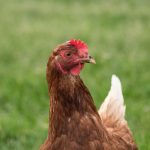Proper water levels in incubators are crucial for successful egg hatching. The water level directly affects humidity, which is critical for embryo development. Maintaining appropriate humidity levels is essential for healthy growth inside the eggs.
Insufficient humidity can cause eggs to dry out, resulting in failed hatching. Conversely, excessive humidity can promote bacterial growth and poor air quality, negatively impacting embryo development. Therefore, careful monitoring of water levels is necessary to ensure optimal conditions for successful hatching.
Water levels also play a significant role in regulating incubator temperature. The water helps stabilize temperature and prevent fluctuations, which can be detrimental to embryo development. Maintaining consistent water levels ensures that the temperature remains within the optimal range.
Water acts as a thermal mass, buffering temperature changes and maintaining a stable environment. This is particularly important during later incubation stages when embryos are more sensitive to temperature variations. Thus, proper water levels are essential for creating a stable and conducive environment for successful egg development and hatching.
Table of Contents
- 1 Factors to Consider When Determining Water Levels
- 2 Recommended Water Levels for Different Stages of Incubation
- 3 Tips for Monitoring and Maintaining Water Levels
- 4 Consequences of Incorrect Water Levels
- 5 Best Practices for Humidity Control in Incubators
- 6 Adjusting Water Levels Based on External Environmental Conditions
- 7 FAQs
- 7.1 What is the recommended amount of water to keep in an incubator for chickens?
- 7.2 Why is it important to maintain the right amount of water in the incubator for chickens?
- 7.3 How often should the water in the incubator be checked and refilled?
- 7.4 What are the consequences of having too much or too little water in the incubator for chickens?
- 7.5 Are there any specific guidelines for adjusting the water levels in the incubator during different stages of incubation?
Key Takeaways
- Proper water levels in incubators are crucial for successful egg incubation and hatching.
- Factors to consider when determining water levels include egg size, ventilation, and humidity requirements.
- Recommended water levels vary for different stages of incubation, with higher levels needed during the hatching phase.
- Monitoring and maintaining water levels is essential for ensuring a stable and suitable environment for the developing eggs.
- Incorrect water levels can lead to poor hatch rates, deformed chicks, and other negative impacts on the hatchery.
Factors to Consider When Determining Water Levels
Incubator-Specific Factors
When determining water levels in an incubator, several factors need to be taken into consideration. The type of incubator being used, the size of the incubator, and the number of eggs being incubated all play a role in determining the appropriate water levels. Different types of incubators may have different water reservoirs or mechanisms for controlling humidity, so it is important to follow the manufacturer’s guidelines for each specific model.
Stage of Incubation
The stage of incubation is another crucial factor to consider when determining water levels. During the initial stages of incubation, lower humidity levels are generally recommended to mimic natural conditions. As the embryos develop and approach hatching, higher humidity levels are required to support their growth and prevent the eggs from drying out.
Environmental Considerations
It is essential to monitor and adjust the water levels accordingly as the embryos progress through the different stages of development. The external environmental conditions also need to be taken into account when determining water levels in an incubator. Factors such as ambient humidity and temperature can impact the rate at which water evaporates from the incubator. In drier climates, more water may be needed to maintain optimal humidity levels, while in more humid environments, less water may be required. It is important to regularly monitor and adjust the water levels based on these external conditions to ensure that the humidity inside the incubator remains within the recommended range for successful incubation.
Recommended Water Levels for Different Stages of Incubation

During the initial stages of incubation, lower humidity levels are generally recommended to mimic natural conditions. The humidity levels during this period should be around 40-50%. This lower humidity helps to prevent excessive moisture loss from the eggs and allows for proper air exchange within the incubator.
It is important to avoid overfilling the water reservoir during this stage to prevent excessive humidity, which can lead to poor air quality and bacterial growth. As the embryos develop and approach hatching, higher humidity levels are required to support their growth and prevent the eggs from drying out. During the final three days of incubation, humidity levels should be increased to around 65-75%.
This higher humidity helps to soften the eggshells and facilitates easier hatching for the embryos. It is crucial to monitor and adjust the water levels during this critical stage to ensure that the embryos have the necessary conditions for a successful hatch. It is important to note that these recommended humidity levels are general guidelines and may need to be adjusted based on specific environmental conditions and individual egg requirements.
Regular monitoring and adjustment of water levels are essential to ensure that the humidity inside the incubator remains within the optimal range for successful incubation.
Tips for Monitoring and Maintaining Water Levels
Monitoring and maintaining water levels in an incubator is essential for successful egg incubation. Here are some tips for effectively managing water levels: 1. Use a hygrometer: A hygrometer is a device used to measure humidity levels.
It is essential to have a reliable hygrometer in the incubator to monitor humidity levels accurately. Regularly check the hygrometer readings and adjust water levels as needed to maintain optimal humidity. 2.
Keep a water log: Keeping a record of water usage and refill times can help track changes in humidity levels over time. This information can be valuable for identifying patterns and making adjustments to maintain consistent humidity levels. 3.
Use distilled water: Using distilled water in the incubator can help prevent mineral buildup and bacterial growth, which can affect air quality and embryo development. It is important to use clean, distilled water to maintain a healthy environment inside the incubator. 4.
Regularly clean and maintain water reservoirs: It is essential to clean and disinfect water reservoirs regularly to prevent bacterial growth and contamination. Keeping the water reservoirs clean helps maintain good air quality and creates a healthy environment for embryo development. 5.
Adjust water levels based on external conditions: External environmental conditions such as ambient humidity and temperature can impact water evaporation rates in the incubator. It is important to monitor these conditions and adjust water levels as needed to maintain optimal humidity levels for successful incubation. By following these tips and regularly monitoring and adjusting water levels, you can create an optimal environment for successful egg incubation and maximize hatch rates.
Consequences of Incorrect Water Levels
Incorrect water levels in an incubator can have significant consequences on egg development and hatch rates. If humidity levels are too low, it can lead to excessive moisture loss from the eggs, resulting in shrink-wrapped or stalled embryos. Dry conditions can also cause deformities in developing embryos and reduce hatchability.
On the other hand, if humidity levels are too high, it can lead to bacterial growth, poor air quality, and reduced oxygen exchange inside the incubator, which can negatively impact embryo development and hatch rates. Fluctuating humidity levels due to incorrect water levels can also have detrimental effects on egg development. Rapid changes in humidity can cause stress on developing embryos and lead to uneven or delayed hatching.
Inconsistent humidity levels can also result in poor chick quality and increased mortality rates after hatching. Maintaining proper water levels is crucial for creating a stable and conducive environment for embryo development and hatching. By ensuring that humidity levels remain within the recommended range throughout the incubation process, you can minimize the risk of negative consequences and maximize hatch rates.
Best Practices for Humidity Control in Incubators

Proper Ventilation is Key
Proper ventilation is essential for maintaining good air quality and preventing excessive moisture buildup inside the incubator. Adequate ventilation helps regulate humidity levels and prevents condensation on eggshells, which can negatively impact embryo development.
Avoid Overcrowding and Maintain Optimal Capacity
Overcrowding the incubator with too many eggs can lead to increased moisture production from developing embryos, which can elevate humidity levels inside the incubator. It is important to follow recommended egg capacities for your specific model of incubator to prevent overcrowding and maintain optimal humidity levels.
Monitor Eggshell Condition and Adjust as Needed
Inspect eggshells regularly for signs of excessive moisture loss or condensation. Abnormalities in eggshell condition can indicate imbalanced humidity levels inside the incubator, which may require adjustments to water levels or ventilation settings.
Automated Humidity Control Systems for Consistency
Some advanced incubators come equipped with automatic humidity control systems that regulate moisture levels based on preset parameters. These systems can help maintain consistent humidity levels without requiring frequent manual adjustments.
By implementing these best practices for humidity control in addition to monitoring and maintaining proper water levels, you can create an optimal environment for successful egg incubation and maximize hatch rates.
Adjusting Water Levels Based on External Environmental Conditions
External environmental conditions such as ambient humidity and temperature can impact water evaporation rates in an incubator, necessitating adjustments to maintain optimal humidity levels for successful incubation. In drier climates with low ambient humidity, more water may be needed in the incubator to maintain optimal humidity levels for egg incubation. It is important to monitor hygrometer readings regularly and adjust water levels as needed to compensate for increased evaporation rates in dry environments.
Conversely, in more humid environments with high ambient humidity, less water may be required in the incubator as evaporation rates may be lower. Monitoring external environmental conditions and adjusting water levels accordingly helps ensure that humidity inside the incubator remains within the recommended range for successful egg incubation. Additionally, changes in ambient temperature can impact evaporation rates and humidity levels inside the incubator.
Higher temperatures can increase evaporation rates, while lower temperatures can decrease evaporation rates. It is important to consider these temperature fluctuations when monitoring and adjusting water levels to maintain consistent humidity throughout the incubation process. By regularly monitoring external environmental conditions and making adjustments to water levels as needed, you can create an optimal environment for successful egg incubation regardless of varying external factors.
In conclusion, proper water levels in an incubator are crucial for creating a stable and conducive environment for successful egg incubation and hatching. Factors such as type of incubator, stage of incubation, external environmental conditions, and best practices for humidity control all play a role in determining and maintaining optimal water levels throughout the incubation process. By following recommended guidelines, monitoring humidity levels, adjusting water levels as needed, and implementing best practices for humidity control, you can maximize hatch rates and ensure healthy chick development during egg incubation.
If you’re interested in learning more about the water requirements for different types of poultry, you may want to check out this article on whether turkeys need a coop. Understanding the specific needs of different types of birds can help ensure that you are providing the best care for your flock.
FAQs
What is the recommended amount of water to keep in an incubator for chickens?
The recommended amount of water to keep in an incubator for chickens is approximately 50-60% relative humidity during the incubation period.
Why is it important to maintain the right amount of water in the incubator for chickens?
Maintaining the right amount of water in the incubator is important for creating the optimal environment for the development of chicken embryos. Proper humidity levels are crucial for the health and successful hatching of the eggs.
How often should the water in the incubator be checked and refilled?
The water in the incubator should be checked and refilled as needed, typically every 1-2 days depending on the size of the water reservoir and the humidity levels inside the incubator.
What are the consequences of having too much or too little water in the incubator for chickens?
Too much water in the incubator can lead to excessively high humidity levels, which can result in poor air exchange and lead to developmental issues in the embryos. Too little water can result in low humidity levels, which can cause the eggs to lose too much moisture and lead to failed hatching.
Are there any specific guidelines for adjusting the water levels in the incubator during different stages of incubation?
During the incubation process, it is recommended to gradually increase the humidity levels in the final days leading up to hatching. This can be achieved by increasing the surface area of the water reservoir or adding additional water to the incubator.
Meet Walter, the feathered-friend fanatic of Florida! Nestled in the sunshine state, Walter struts through life with his feathered companions, clucking his way to happiness. With a coop that’s fancier than a five-star hotel, he’s the Don Juan of the chicken world. When he’s not teaching his hens to do the cha-cha, you’ll find him in a heated debate with his prized rooster, Sir Clucks-a-Lot. Walter’s poultry passion is no yolk; he’s the sunny-side-up guy you never knew you needed in your flock of friends!







